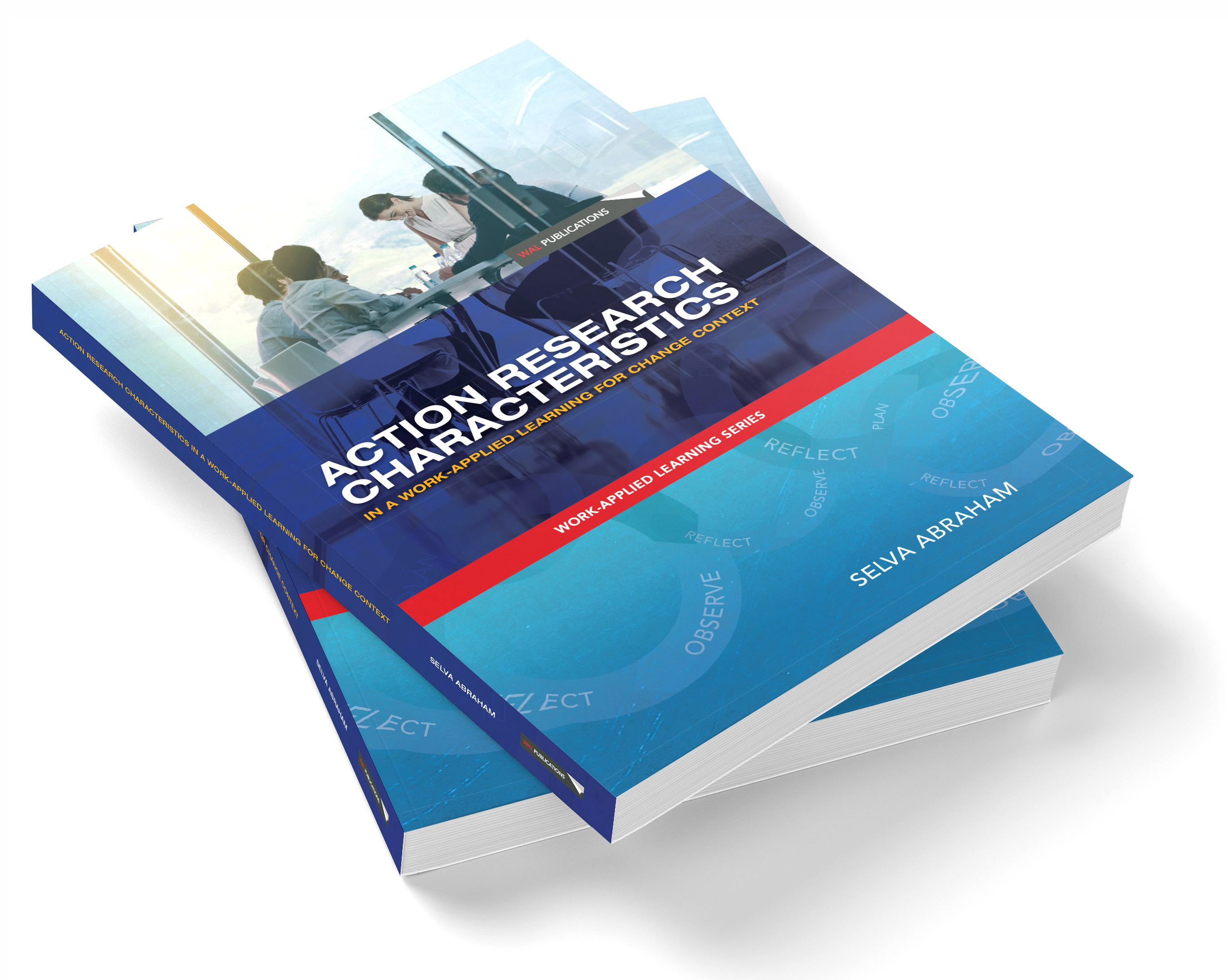Drawing from his long experience, first in management development and then education, Emeritus Professor Selva Abraham demonstrates the value of this approach. He balances the ideas of Work-Applied Learning with practical examples of its application not only in Australia but also Malaysia and Papua New Guinea.
Action Research Characteristics in a Work-Applied Learning for Change Context. This book is an adjunct to Professor Abraham’s Exploratory Action Research Method book that builds on the literature relating to the Action Research characteristics when specifically used in a Work-Applied Learning (WAL) for change context. The term WAL for change, encapsulates a cutting edge process model developed by Professor Abraham, to enable managers and teams to research, reflect, learn, and at the same time, introduce departmental, divisional, or organisational change.
The Action Research characteristics defined in this book have emerged from a journey of enlightenment through research, application, research supervision, critical reflection, and refinement. The outcome of this journey are twelve key constituent characteristics of Action Research in the Work-Applied Learning for change context. These characteristics have been tried and tested in the workplace, and researched and reflected upon on the basis of the evolving literature on the characteristics of Action Research over the past 26 years.
This journey began when Professor Abraham finished his MBA program at Henley Business School in the UK, and has continued through his PhD study, consultancy projects, and supervision of research/postgraduate candidates. This continuing learning and research process has led to the refinement and the current formulation of the key Action Research characteristics relevant for organisational change underpinning the WAL model.
Drawing from his long experience, first in management development and then education, Emeritus Professor Selva Abraham demonstrates the value of this approach. He balances the ideas of Work-Applied Learning with practical examples of its application not only in Australia but also Malaysia and Papua New Guinea.



